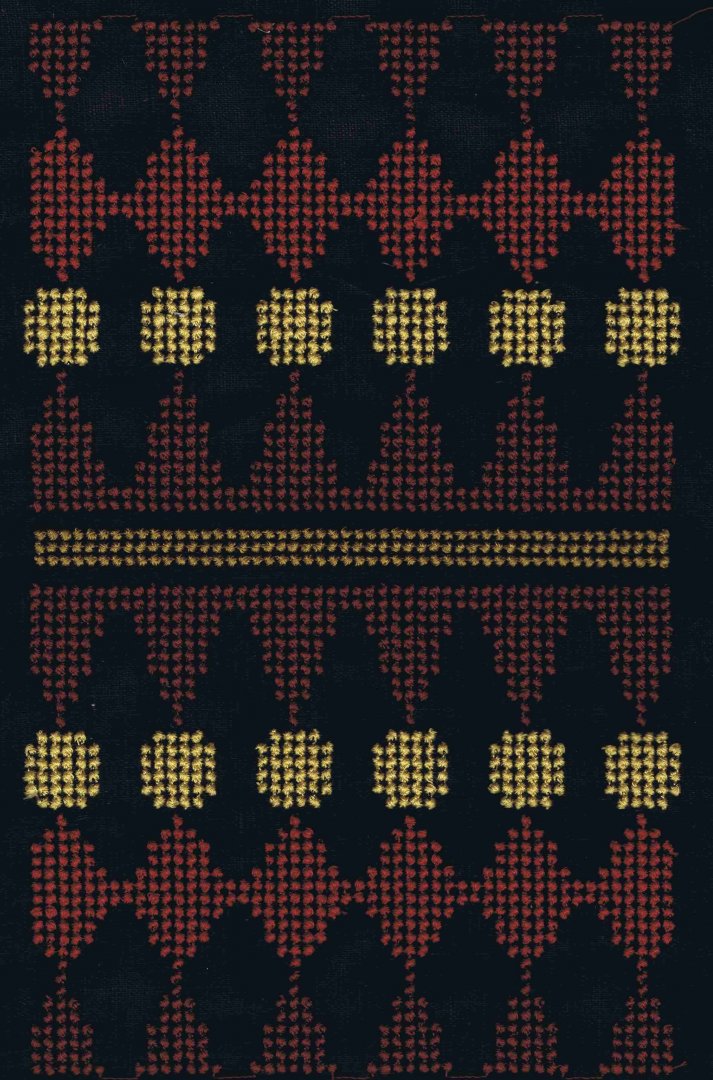Introduction to French stitch embroidery: combining tradition and three-dimensionality
This style of embroidery not only allows the addition of texture and depth to fabrics but also offers great versatility in decorating garments and textile accessories. French stitch is particularly prized for its elegance and ability to transform simple pieces into works of art, making it ideal for projects that require a touch of sophistication and originality.
Basic French stitch embroidery techniques: how to make staggered Xs
To master French stitch embroidery, it is essential to learn how to correctly make the offset Xs that are the basis of this technique.
The process begins by creating a single X with the thread on the fabric. Then, instead of following a regular pattern as in cross stitch, French stitch requires these Xs to be staggered on top of each other to build volume and texture. This method of overlapping allows for unique three-dimensional visual effects, which can vary depending on thread tension and number of overlaps.
It is critical to use quality yarns suitable for the thickness required by the design to ensure that the end result is durable and aesthetically pleasing. This technique can be used either as a decorative element in small details or as the main feature of an entire design, thus offering endless creative possibilities for embroidery enthusiasts.

Yarn selection for French stitch: size and visual effects
Yarn selection is a crucial aspect in the making of French stitch embroidery, as it directly affects the aesthetic result and quality of the finished work.
For best results, it is essential to consider the size of the desired "dot," that is, the three-dimensional effect created by the overlapping Xs. Thicker yarns will produce a more pronounced and visible effect, ideal for work that requires a strong visual impact, while thinner yarns are suitable for delicate and less pronounced details.
The choice of yarn color also contributes to the visual impact of the embroidery, with opportunities to create contrasting plays or color harmonies. High-quality yarns are recommended to ensure that the color remains bright and that the thread structure resists the wear and tear of time and possible washing of the fabric.
Creative applications of French stitch: from floral patterns to minute details
French stitch offers a wide range of creative applications in embroidery, making it extremely versatile and suitable for a variety of styles and projects.
This technique is particularly effective in making floral motifs, where its ability to add volume and texture can mimic the natural appearance of petals and leaves.
In addition to floral patterns, French stitch is excellent for filling large areas with a densely textured effect, making the finished piece visually interesting and inviting to the touch.
In addition, this technique can be used to emphasize minute details in a more complex design, such as accents on high-fashion clothing or custom accessories. The three-dimensional effect of French stitch adds a unique depth that can transform a simple embroidery project into a refined and complex work of art.
Inspiring projects with French stitch: ideas for beginners and advanced embroiderers
French stitch is not only a fascinating embroidery technique because of its aesthetic appeal, but it is also incredibly versatile, making it suitable for embroiderers of all levels.
For beginners, simple projects such as small flowers or simple geometric shapes can serve as a great starting point to become familiar with the technique. These projects require a limited amount of material and offer the satisfaction of completing a work of art in a short time.
For more advanced embroiderers, French stitch can be used in more complex projects such as detailed portraits or intricate landscapes using a variety of colors and gradations. These works not only challenge the embroiderer's skills, but also allow them to explore the depth and texture this technique can offer.
Regardless of experience level, French stitch stimulates creativity and encourages embroiderers to explore new ideas and applications.
Tips and tricks for perfecting French stitch in embroidery
Perfecting French stitch takes practice and attention to detail. A key tip is to maintain a constant thread tension during embroidery. This helps ensure that each stitch is even and that the end result is clean and consistent.
It is also important to choose the right needle; a needle that is too thick can damage the fabric, while one that is too thin may not be able to handle the thread properly.
Another useful trick is to use an embroidery hoop to keep the fabric taut, which facilitates stitch accuracy and prevents wrinkling of the material. Finally, for embroiderers who wish to add an extra layer of complexity to their projects, experimenting with different lengths and thicknesses of yarn can lead to interesting and unique visual effects.
The history and evolution of French stitch in the world of embroidery
French stitch has a rich history that is intertwined with the evolution of embroidery over the centuries. Originally developed as a technique to add visual richness to religious textiles and royal robes, French stitch grew in popularity throughout Europe.
Over time, this technique has been adapted and reinterpreted in various cultural contexts, finding applications in everything from contemporary fashion to interior design. The appeal of French stitch lies in its ability to create texture and dimension, a quality that makes it modern despite its historical roots.
Today, French stitch continues to be a popular choice among designers and artisans because of its inherent beauty and versatility in modern design.